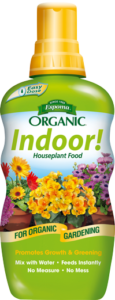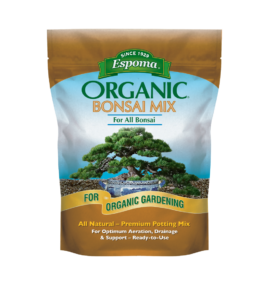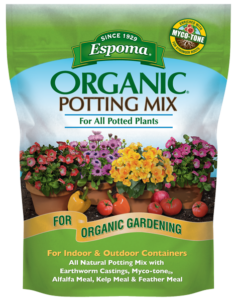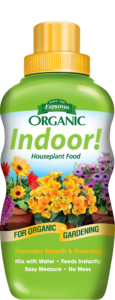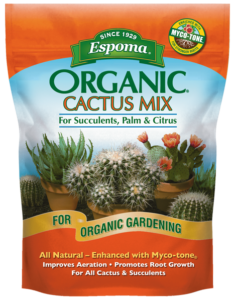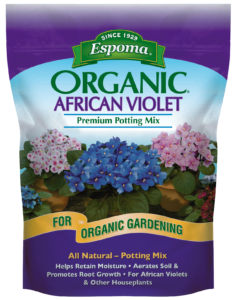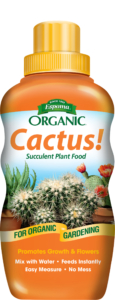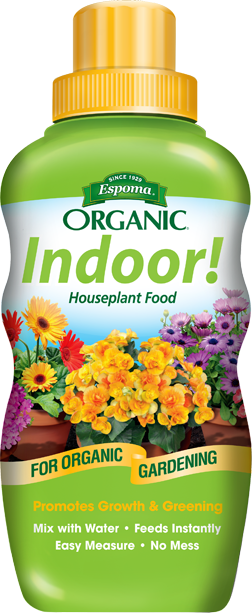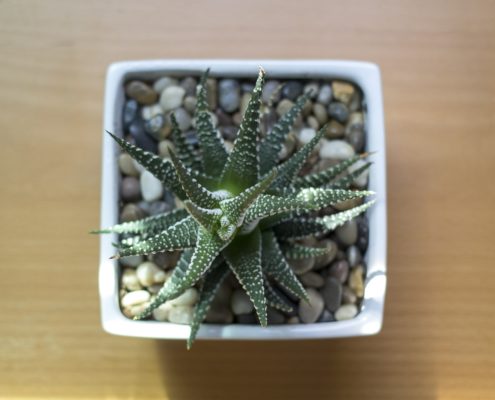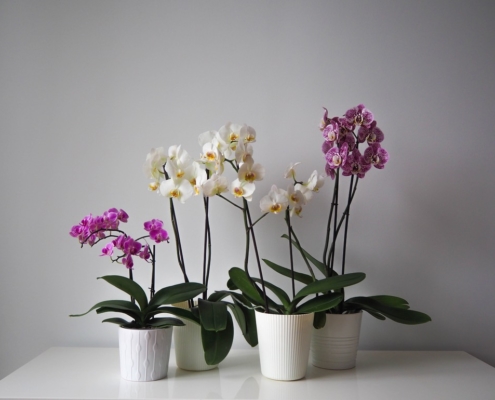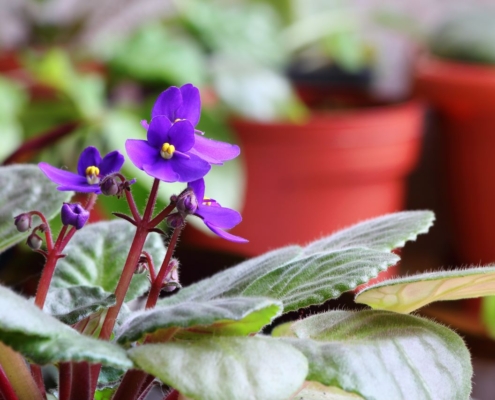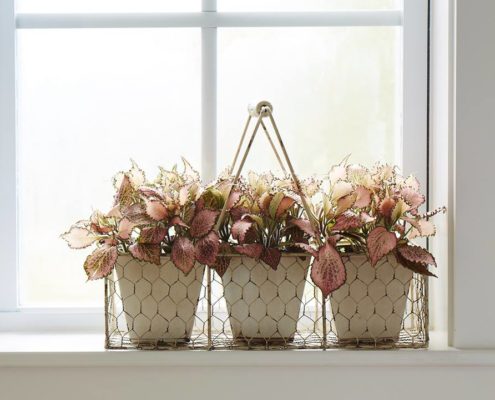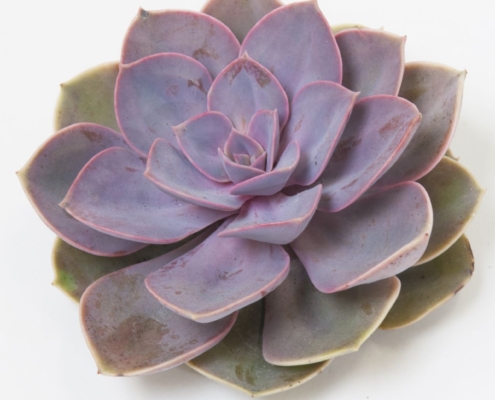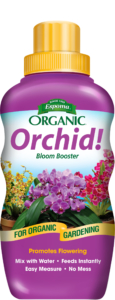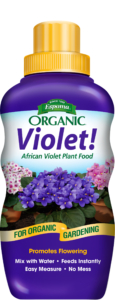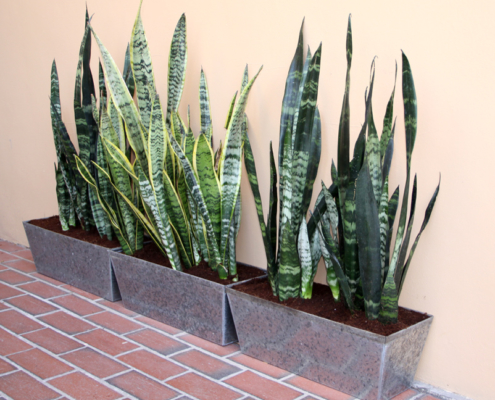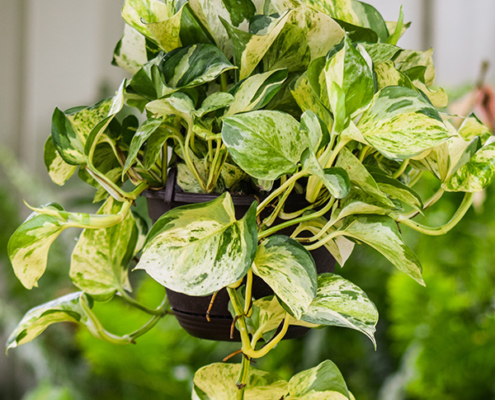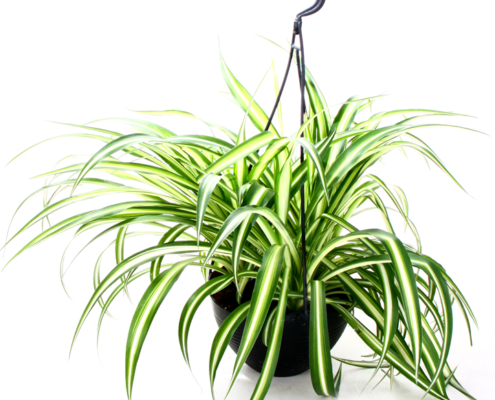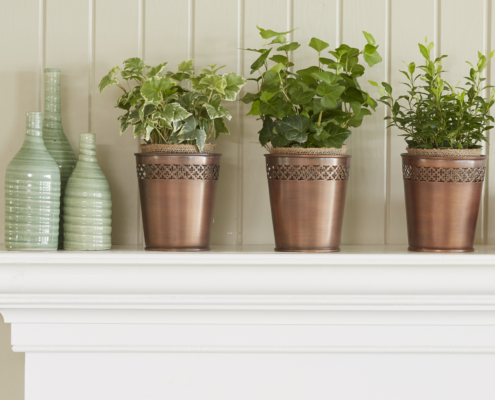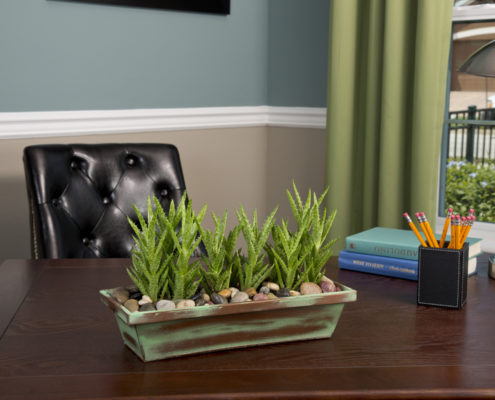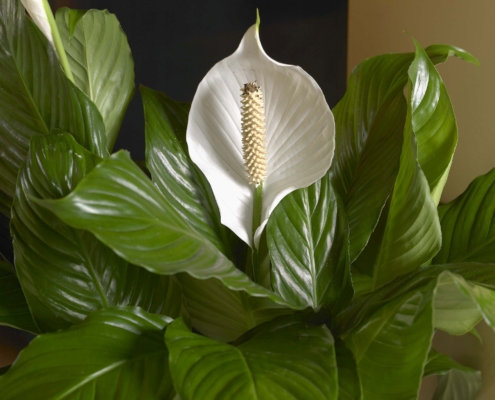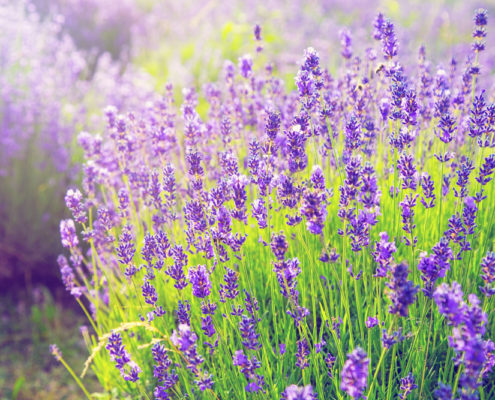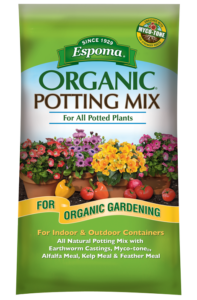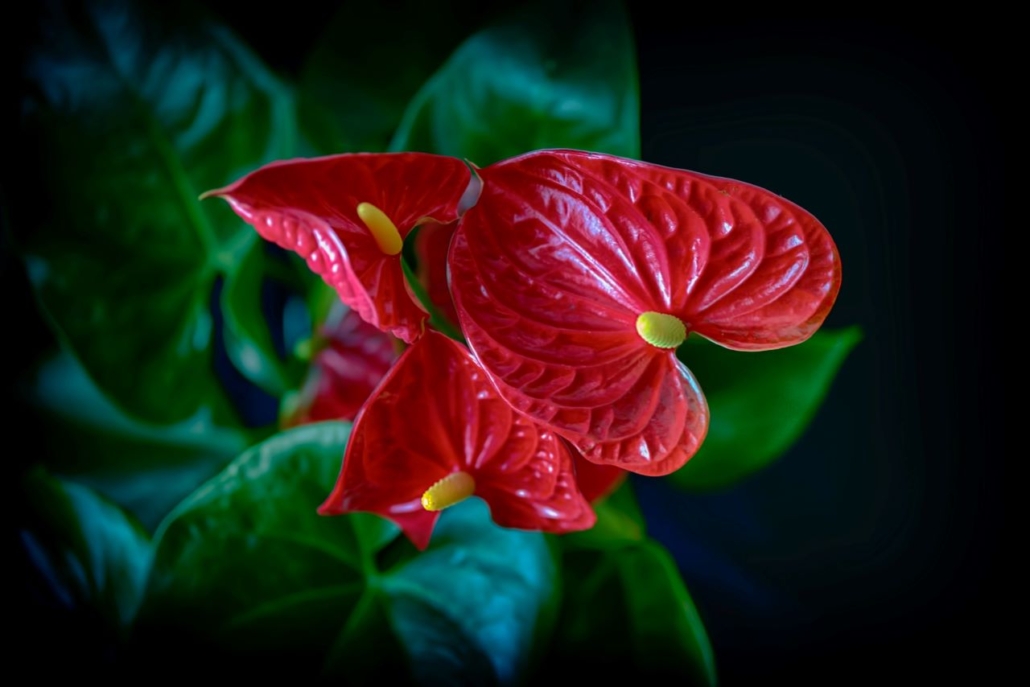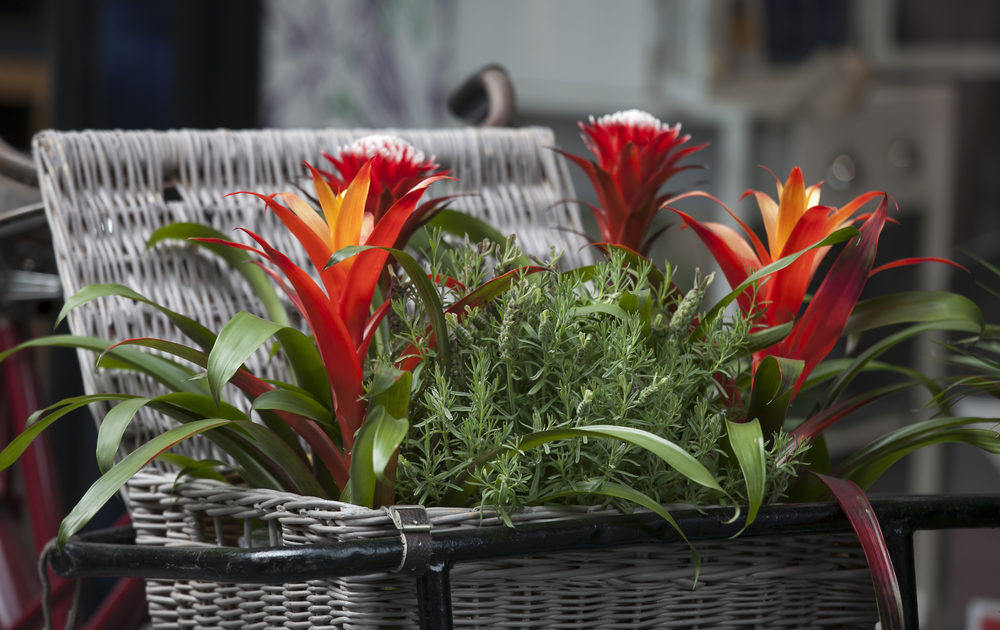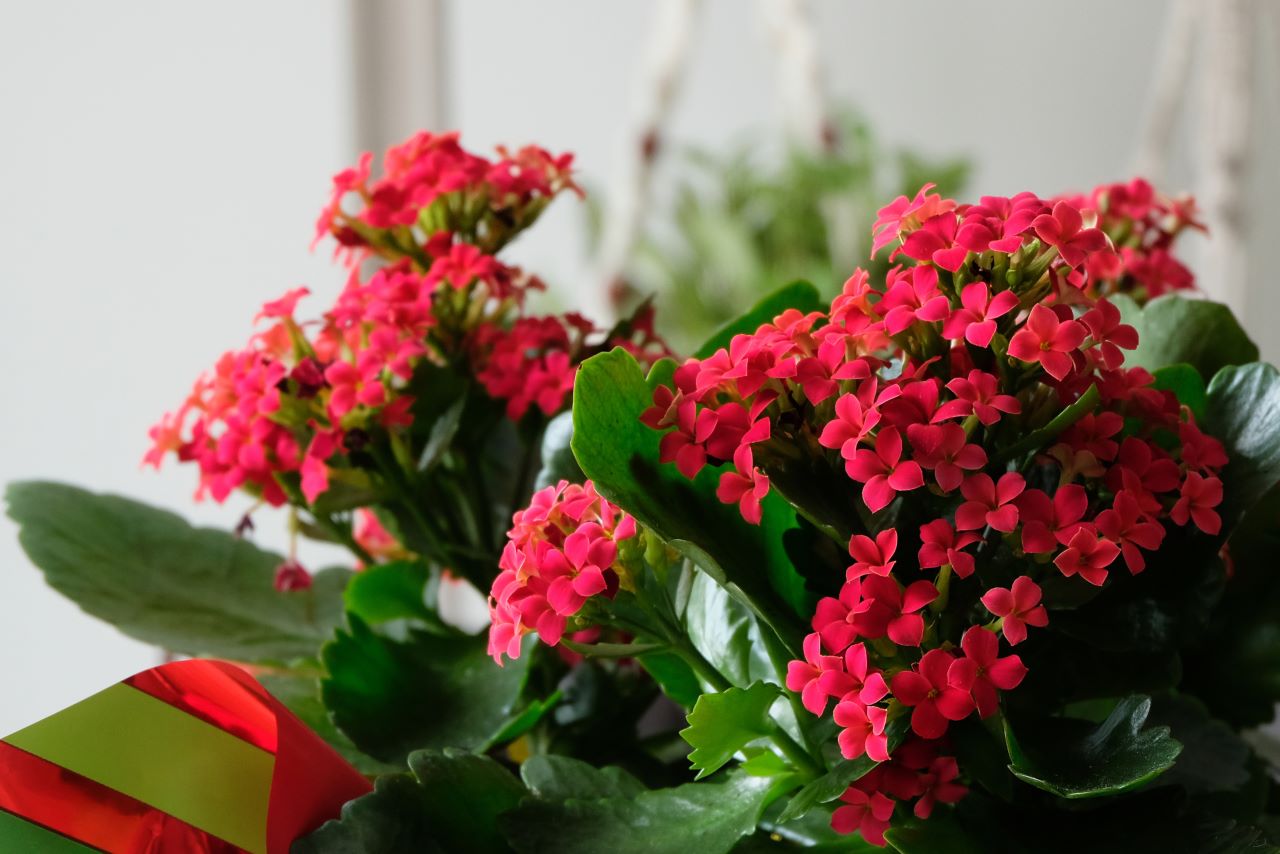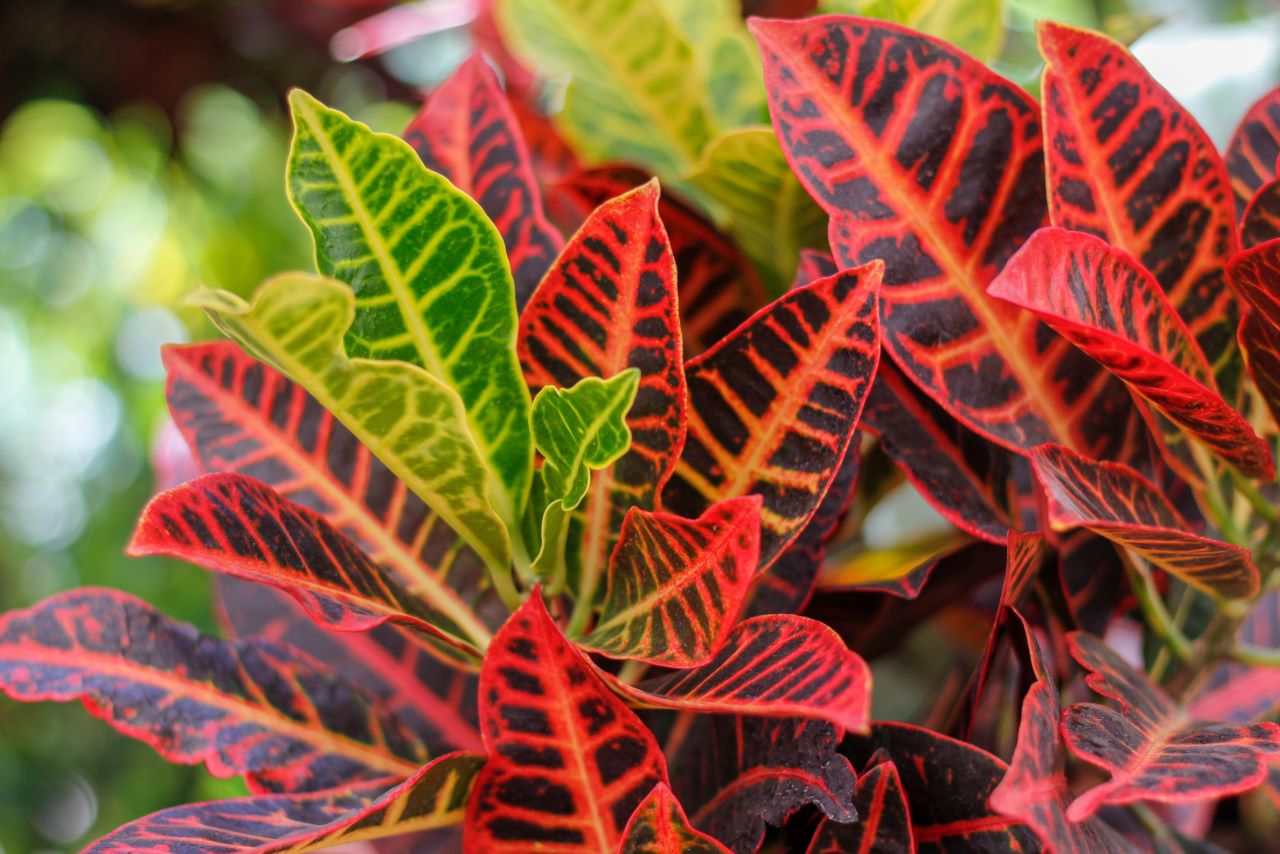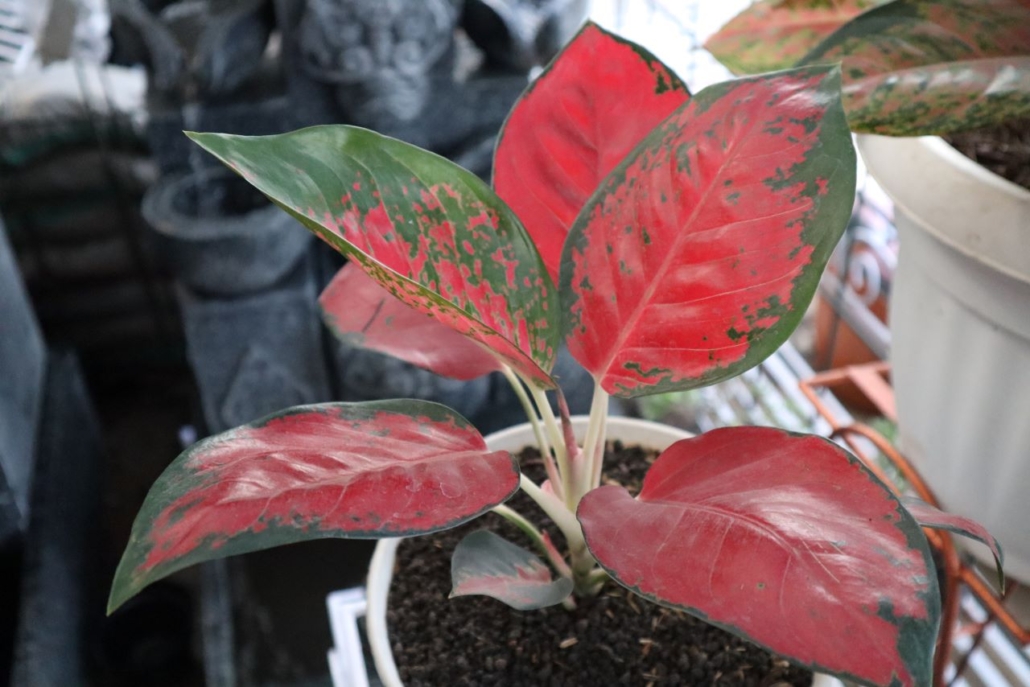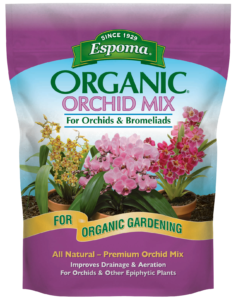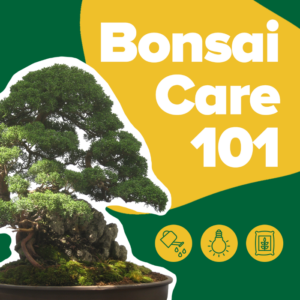
Bonsai Care 101
Bonsai trees–if you’re a millennial, you probably remember them from The Karate Kid movies. Did you know it’s actually pronounced “bone-sigh”? Bonsai means “to plant in a container or a potted plant.”
This blog all about bonsai care is inspired by Episode 119 of Bloom and Grow Radio–where host Maria Failla interviewed Bjorn from Eisei-En Bonsai.
Can Any Tree Be a Bonsai?
There are 3 characteristics to look for to help transform trees into the bonsai art we know and love:
- Smaller leaves. You’re trying to create a large tree shrunk down into miniature form–so if you’re using a trunk with very large leaves, it looks quite out of proportion with the overall size of the plant.
- Plants with bark on them. You should have to work with woody plants to achieve the true bonsai form. All of the conifers like juniper and pine are great for this!
- Look for plants with apical dominance. Apical what?! Apical dominance means the bud at the tip of the stem stops the growth that occurs on the other buds along the stem. It does this to become the dominant stem and allow woody plants to grow taller–which is great for bonsai shaping!
Are Bonsai Grown Indoors or Outdoors?
You may be wondering, “can I grow a bonsai as a houseplant?” And the answer is yes–but with a few caveats.
You need to figure out if it’s a tropical or a temperate climate tree. Temperate climate trees have four seasons and need to go through their life cycles outdoors–think oaks and maples.
Tropical climate trees do not survive freezing temperatures and suffer in below 55 degrees F conditions, so these would be better options as indoor bonsai plants. Ficuses like the Weeping Fig (Ficus benjamina) and the Pot-Bellied Ficus (Ficus microcarpa) would both work great!
If you want an indoor bonsai, try sticking with the subtropical and tropical climate plants. And check out the Top 5 Bonsai Trees (Indoor and Outdoor Options) with Bjorn from Eisei-en Bonsai for more variety options!
How to Care for Bonsai Trees
Now that we know more about what to look for, let’s jump right into bonsai care. We’ll cover all the basics for soil, fertilizer, water, light, and pruning. Buckle up, ‘cause we’re on this road of planty learning for a while!
What Is the Right Soil for Bonsai?
Since your goal is total control over the growth of the bonsai, you have to use almost entirely inorganic components when you mix your soil together. To make your own, try getting your hands on these 3 basic components:
- Expanded Shale: great for aeration and drainage
- Calcined Clay: holds a lot of moisture, but also releases that moisture & fertilizer back to the plants easily
- Aged Forest Products: also good for aeration, drainage, and root growth.
The particle size is quite large at 3/16 inch to ensure as much drainage and aeration to the root system as possible. Don’t want to make your own soil mix? Check out our Organic Bonsai Mix.
By keeping the plants in a mostly inert soil mix, you can then decide how much fertilizer to give the tree and the type of growth that you’re going to get out of the plant.
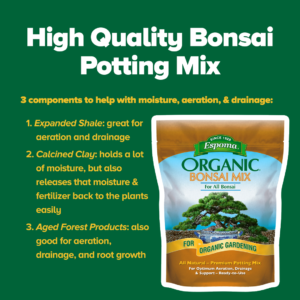
How Do I Fertilize Bonsai?
Fertilizer is the key to controlling your plant’s growth. To keep the soil from clogging up, Bjorn recommends distributing bonsai fertilizer by adding synthetic or organic fertilizer to a tea bag and slowly allowing the nutrients to leach into the soil. Every time you water your bonsai, water directly over your nutrient tea bag.
So how much fertilizer and what type of fertilizer should you apply? That all depends on the stage of tree development.
- Young Trees: at this stage you want to thicken the trunk of the plant. Use a very high-nitrogen synthetic or inorganic fertilizer, which produces elongating, inner nodes and bigger leaves on your tree.
- Older Trees: with older trees, you’re simply in maintenance mode. Here you’ll need fertilizer that has a much lower nitrogen value and well-rounded, equal amounts of nutrients.
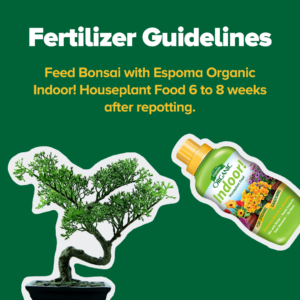
How Do I Water Bonsai?
Since you’re using a rockier, more aerated soil, you’ll be watering more frequently than you would a regular potting mix.
A good general watering rule with bonsai plants: Bjorn suggests checking on them twice a day and water when the soil surface is slightly dry. Stick to the basic schedule of checking on your bonsai morning and evening, and all should be well in the bonsai world!
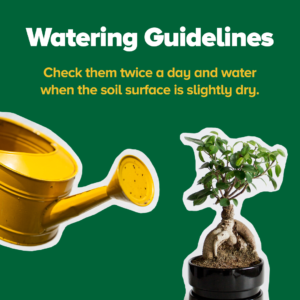
How Much Light Do Bonsai Need?
In general, you want your bonsai plants to have as much light as possible. Bjorn says the more light you have, the smaller the leaf size and the softer the branch structure. In the long run it will be easier to maintain that tree’s shape.
If you plan to keep an outdoor bonsai, morning sun and afternoon shade is best during summer. Indoor bonsai plants will need supplemental light, especially during the fall and winter months. Generally speaking, 12-14 hours of direct light is best for bonsai growth.

How to Prune Bonsai?
You might have guessed that pruning is one of the most important factors in creating a bonsai tree. There are two main parts to pruning: roots and shoots. Let’s go over both.
What is the difference between Root Pruning and Shoot Pruning?
Root pruning should happen every 2-5 years in spring when you notice water is no longer penetrating the soil and simply pooling on the surface. Remove a lot of the old soil with a root rake or wooden chopstick. You will inevitably remove some roots through that process, but removing that old soil exposes the outer and underside of the root system. Make sure you don’t prune back more than 20-30% of the roots. Then simply replenish the space you’ve created with new potting mix. Since the mix is fresh, make sure to use your hands to pat the soil within the root system of the plant and give it a good watering to help settle the soil.
Shoot pruning is also done every 2-5 years in late spring or early summer after new growth has appeared. Your bonsai should have put out about 6-10 leaves–cut it back to two leaves with dormant buds. Essentially, you want to look for those little bitty nubs that are right at the base of the leaves. As long as you’re counting at least two, you can cut them back.
Think about pruning like you’re always trying to push the growth back and create desired directionality in one direction or another within the plant. Make sure to avoid pruning your roots and shoots in the same year–that would be far too much stress on your precious bonsai.
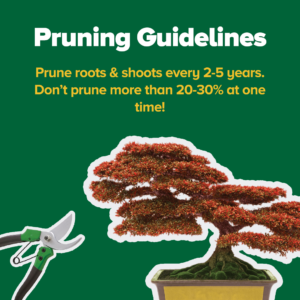
Bonsai is a Wonderful Practice for Mindful Plant Parents!
Are you someone who likes to interact with your plants on a daily basis, control all the elements, and look towards the future? Then the bonsai is a perfect fit for you! Caring for a bonsai is one of the most engaging and interesting hobbies you can get into. It really shifts your perspective on instant gratification, which will definitely make you think differently about not only plants, but also life in general.
Ready, Set, Grow!
If you’re ready to grow your own bonsai, make sure to check out the Eisei-en Bonsai YouTube channel with Bjorn and find all the specific guidelines for each tree variety along with tons of other helpful information.
Where can one buy a bonsai tree? If you’re in Nashville, Tennessee, you absolutely have to get one of Bjorn’s bonsai plants at Eisei-En Bonsai Garden. Otherwise, check out Brussel’s Bonsai online for plants, tools, and pots!
About Bloom & Grow Radio Podcast
Bloom & Grow Radio Podcast helped people care for plants successfully and cultivate more joy in their lives. Host Maria Failla, a former plant killer turned happy plant lady, interviews experts on various aspects of plant care, and encourages listeners to not only care for plants, but learn to care for themselves along the way.
About Our Interviewee
Bjorn from Eisei-En Bonsai
Bjorn Bjorholm’s bonsai love started when he got a bonsai tree for his 13th birthday after watching all the Karate Kid movies. Even though his first bonsai croaked (hello plant parent initiation), Bjorn was hooked and founded the Knoxville Bonsai Society in high school with his father. After graduating from the University of Tennessee focusing on Japanese language and business, he moved to Japan and began a bonsai apprenticeship for 6 years under Master Keiichi Fujikawa at Kouka-en bonsai nursery in Osaka, Japan. His tenure as an apprentice at Kouka-en was followed by three years as artist-in-residence, making him the first foreign-born working bonsai professional in Japan. Bjorn now owns Eisei-en Bonsai in Nashville, TN, the premier bonsai garden, nursery and school of the Eastern US.
Follow Bjorn:
Website
Instagram
YouTube
References
- Episode 119 of Bloom and Grow Radio
- How Woody Plants Grow: https://extension.illinois.edu/blogs/garden-scoop/2020-12-12-how-woody-plants-grow
- Used to describe apical dominance
- Temperate Deciduous Forest: https://earthobservatory.nasa.gov/biome/biotemperate.php
- Used for temperate tree examples
- Ficus benjamina: https://plants.ces.ncsu.edu/plants/ficus-benjamina/
- Used for info on Ficus benjamina
- Ficus microcarpa: https://plants.ces.ncsu.edu/plants/ficus-microcarpa-ginseng/
- Used for info on Ficus microcarpa
- A Bonsai Close-Up on Indoor Tropical Bonsai: https://prairiestatebonsai.com/a-bonsai-close-up-on-indoor-tropical-bonsai/
- Used for indoor bonsai light requirements
Featured Products
